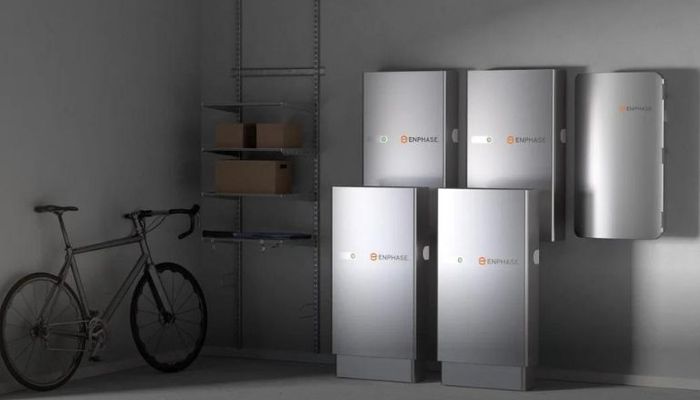5 Best Solar Battery Backup Systems for Homes in 2023

With net metering rules changing in states like California, and power outages becoming more frequent due to climate change, solar battery backup systems have grown in popularity recently.
But how do you choose the best battery backup system for your home? There’s no one-size-fits-all solution so let us guide you through the deciding factors and the best systems available on the market today.
Things to Look Out for in a Battery Backup System
Before we talk about what are the best battery backup systems on the market right now, let’s cover the key deciding factors to keep in mind.
Kilowatts (kw) Vs. Kilowatt Hours (kwh)
Kilowatts refers to how much power a system can provide at one time. In other words, how many appliances the battery can power at once.
For example, a system that has an output of 4.8 kW can provide power for things like
- 1.8kW refrigerator
- 1kW microwave
- 0.1kW (or less) lights
However, it will not be able to run a 5kW clothes dryer even if everything else is turned off.
Killowatt-hour is used to measure the amount of stored energy in a battery. For example, a battery with 10 kWh usable capacity can run a 1kW microwave for 10 hours: 1 kW x 10 hours = 10 kWh
That’s a lot of microwaving, but you get the idea.
Usable Storage Capacity
While kWh tells you the overall battery capacity, you may not be able to use all of the stored energy since many batteries can be damaged if completely drained out.
The depth of discharge (DoD) a battery can withstand depends on the chemical components of the battery. For example, lead acid batteries can only be drained down to 50% of their capacity. On the other hand, most lithium iron phosphate (LFP) batteries have a DoD of around 90%, which is one of the reasons they’re so popular.
Learn more: What Is The Best Battery for Solar: Lead-Acid or Lithium?
Whole Home Backup Vs. Partial Backup
Ideally, everyone wants a whole home battery backup system. While it is definitely doable, it is also costly. The battery equipment costs over $40,000, not including other solar equipment or installation costs.
So the next best solution is to set up a partial home backup system. In this scenario, you decide which electronics in your household are important to run during outages. A separate subpanel will be set up for them, and you will have a much better-priced system.
We usually recommend to our customers to only backup priority loads, such as:
- Lights
- Refrigerator
- Internet
- A couple of outlets for TV and phone charging
- Garage door opener
Customer Support
Customer support is an important factor when buying a solar battery backup system. For instance, the recent storms in California caused outages that affected many solar systems. Unfortunately, a lot of homeowners complained they weren’t able to get the necessary customer support, leaving them in the dark.
Which wasn’t the case with Enphase customers. They have 7 days a week customer support for storage systems, so their customers got the needed support to ride out the power outages.
The Best Solar Battery Backup Systems for Homes
Over the 16 years of GoGreenSolar’s existence, we’ve designed and commissioned countless battery systems from all the major brands. But two systems really stand out when it comes to overall value:
So here are our recommendations for the best solar battery backup system based on your needs:
Best for Efficiency
Hands down, the best battery backup system in terms of efficiency is any system with a Sol-Ark inverter and Fortress Power batteries.
This is a DC-coupled system, so you don’t lose a lot of power converting back and forth from DC to AC as is the case with AC-coupled systems.
Learn more: AC Coupling vs. DC Coupling: What’s the Difference?
Best for Partial Backup
If you just want to keep your refrigerator running, charge your phone and have a few lights on during an outage, we recommend the 4.0 kW Solar Kit with Enphase Microinverters and 10 kWh Encharge Lithium Battery.
This will provide you up to 3.84 kW of power and 10 kWh of usable storage.
Best for Whole-House Backup
The best whole-house battery backup system would have a Sol-Ark 15 kW inverter and at least three Fortress Power eFlex battery banks.
The Sol-Ark 15kW is the only inverter that can pass 200 amps of power through, so you don’t have to set up a separate subpanel to backup loads.
Three Fortress Power eFlex batteries would give you a usable storage capacity of 16.2 kWh, which is about 3 kWh more than a Tesla PowerWall at a much better price.
Best for Grid-Tie
Enphase IQ Battery systems are best suited for grid-tie systems with storage since both their hardware and software are optimized for customers who are on the grid.
Best for Off-Grid
Sol-Ark inverters with Fortress eFlex batteries are the perfect combination for an off-grid home. Sol-Ark inverters have a huge capacity that can power big loads. Plus, they come with their own built-in hardware and software to integrate a generator which is highly recommended for off-grid systems.
Choose the Right Battery Backup System for Your Home
There is quite a lot to navigate when choosing the best battery backup solution for your unique situation. The good news is that you don’t have to figure it out by yourself.
Reach out to GoGreenSolar and our experts will help you make the right choice and guide you through the entire process.






